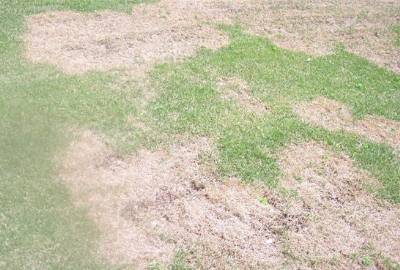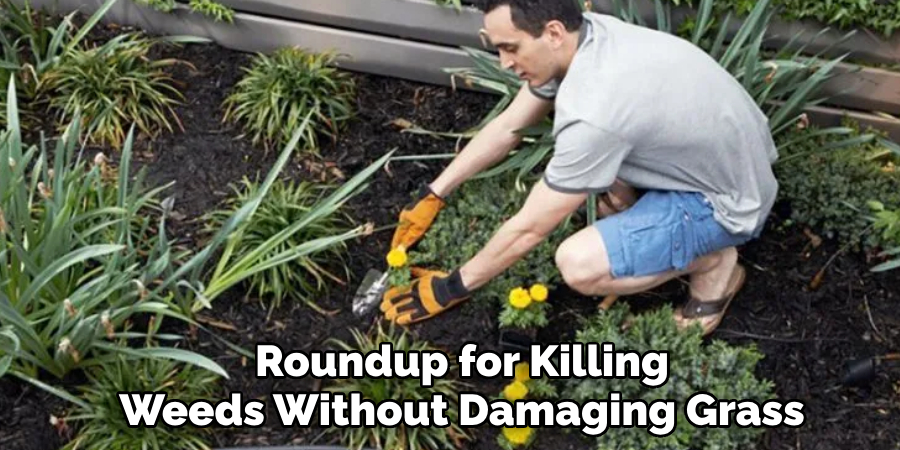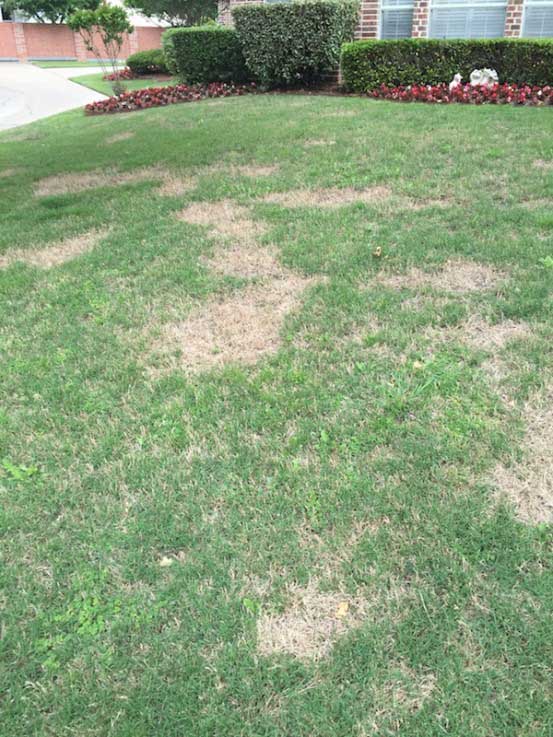To fix grass killed by roundup, you can remove the affected areas and reseed with new grass. Promote healthy regrowth by providing adequate sunlight, water, and nutrients.
Grass is a key element in creating a lush and beautiful landscape. However, it can be disheartening to see your grass killed by roundup, a popular herbicide used to eliminate weeds. Luckily, there are effective ways to revive your lawn and bring it back to life.
We will explore the steps you can take to fix grass that has been affected by roundup. By following the right techniques and providing the necessary care, you can restore your lawn and enjoy a green and vibrant outdoor space once again. Let’s dive in and discover how to bring back your grass from the brink of decline.

Credit: www.walterreeves.com
How to Fix Grass Killed by Roundup: Step by Step Guide
Understanding The Impact Of Roundup On Grass
Using roundup can have detrimental effects on your grass, causing it to die. Signs of damage include wilting, discoloration, and thinning of the grass. Roundup contains a chemical called glyphosate that inhibits the growth of plants. When applied to grass, it disrupts the enzymes necessary for photosynthesis, leading to the grass’s demise.
It is important to recognize these signs as early as possible so that you can take appropriate action to fix the issue. Reseeding or overseeding the affected areas, proper watering, and ensuring adequate sunlight are some ways to revive your grass after it has been damaged by roundup.
By understanding the impact of roundup on your grass and knowing how to recognize the signs of damage, you can take steps to fix the problem and restore your lush green lawn.
Preparing The Lawn For Restoration
Assess the grass damage caused by roundup to determine the extent of restoration needed. Begin by removing the dead patches of grass to create a clean slate for renewal. Focus on improving the soil quality by incorporating organic matter to enhance its fertility.
Consider adding compost or using a soil conditioner to nourish the soil and provide necessary nutrients. Prepare the lawn by loosening the soil with a rake or tiller to ensure proper aeration. This will allow the new grass seeds or sod to establish healthy root systems.
Follow the recommended instructions for reseeding or laying down new sod. Additionally, regularly water and maintain the lawn to encourage healthy growth and prevent future weed invasions. Restoring a lawn damaged by roundup requires patience and care, but with these steps, you can revive your grass and bring it back to its former lush and green state.
Restoring The Grass
Restoring the grass that has been killed by roundup requires taking specific steps. Begin by choosing the appropriate grass seed that will thrive in your area. It’s crucial to prepare the seedbed properly before seeding the damaged areas. This involves removing any dead grass, weeds, and debris from the affected areas.
Loosen the soil using a garden fork or tiller, ensuring that it is well-drained. Spread a layer of topsoil or compost to provide a nutrient-rich base for the new grass seed. Next, evenly distribute the grass seed over the damaged areas, following the recommended seeding rate.
Lightly rake the seed into the soil or topsoil and water thoroughly. To promote germination, keep the seeded areas consistently moist. With proper care and maintenance, you can revive your grass and reclaim a vibrant, healthy lawn.
Maintaining The Restored Lawn
Maintaining the restored lawn involves proper watering of the newly seeded areas. Ensure sufficient moisture reaches the grass to support growth and establishment. Avoid overwatering or underwatering, as both can negatively impact the lawn’s health. Regularly check the soil moisture and adjust the watering schedule accordingly.
Along with watering, fertilizing the restored lawn is essential to provide necessary nutrients. Choose a high-quality, balanced fertilizer and follow the manufacturer’s instructions for application. Proper mowing techniques also play a crucial role in maintaining a healthy restored lawn. Ensure the mower blades are sharp to avoid tearing the grass and maintain an optimal mowing height.
Regularly remove any debris or weeds from the lawn to prevent competition for resources. By following these guidelines, you can fix grass killed by roundup and enjoy a beautiful and thriving lawn.
Tips For Preventing Future Damage
If you’re dealing with grass killed by roundup, there are a few tips to follow. Firstly, prevent future damage by exploring alternative weed control methods. These can be effective in maintaining a healthy lawn without relying solely on roundup. Additionally, proper application of roundup is crucial in minimizing any potential harm to your grass.
Follow the instructions carefully and use the recommended amount. Alongside this, regular lawn maintenance is essential. Keeping your lawn well-watered, mowed at the appropriate height, and fertilized will help promote healthy grass growth and reduce the likelihood of damage. By implementing these tips, you can fix grass killed by roundup and prevent it from happening again in the future.
Frequently Asked Questions For How To Fix Grass Killed By Roundup
How Can I Fix Grass That Has Been Killed By Roundup?
To fix grass that has been killed by roundup, start by removing the dead grass and any remaining roundup residue. Then, aerate the soil and apply new grass seed or sod. Make sure to water the area regularly and follow proper lawn care practices to promote healthy regrowth.
Is It Possible To Revive Grass That Has Been Damaged By Roundup?
Yes, it is possible to revive grass that has been damaged by roundup. First, stop using roundup and remove any remaining residue. Then, aerate the soil, apply organic fertilizers, and overseed the affected area. Water regularly and follow a proper lawn care routine to allow the grass to recover and regrow.
What Are Some Alternatives To Roundup For Killing Weeds Without Damaging Grass?
There are several alternatives to roundup for killing weeds without damaging grass. Some options include using natural weed killers like vinegar, boiling water, or salt. Other methods include manually pulling weeds, using a weed torch, or applying corn gluten meal.

Research and choose a method that best suits your needs and preferences.
Conclusion
Restoring grass that has been damaged by roundup requires a proactive and consistent approach. By following the steps outlined in this blog post, you can effectively revive your lawn and create a vibrant and healthy outdoor space. Remember to start by removing any remaining roundup residue and thoroughly wash your tools to prevent further contamination.
Next, focus on improving the soil quality by adding organic matter and conducting a soil test to identify any nutrient deficiencies. Finally, choose the right grass variety for your region and implement proper watering and maintenance practices. With patience and dedication, you can successfully revive your grass and enjoy a lush and thriving lawn once again.
Implement these techniques to fix your weed killer-damaged grass, and remember to prioritize prevention to avoid future damage.

